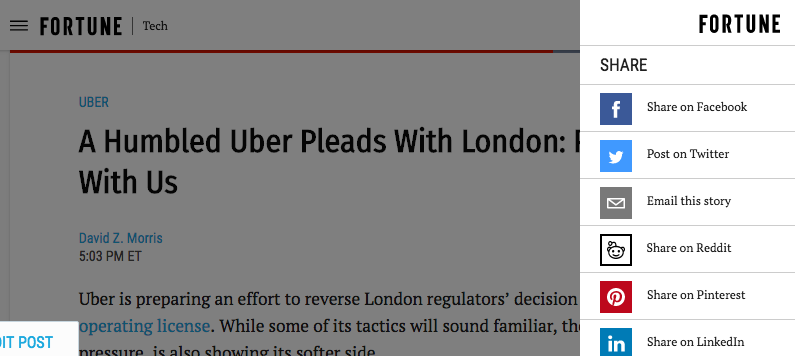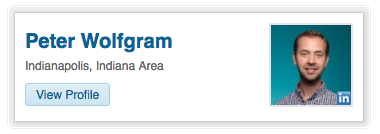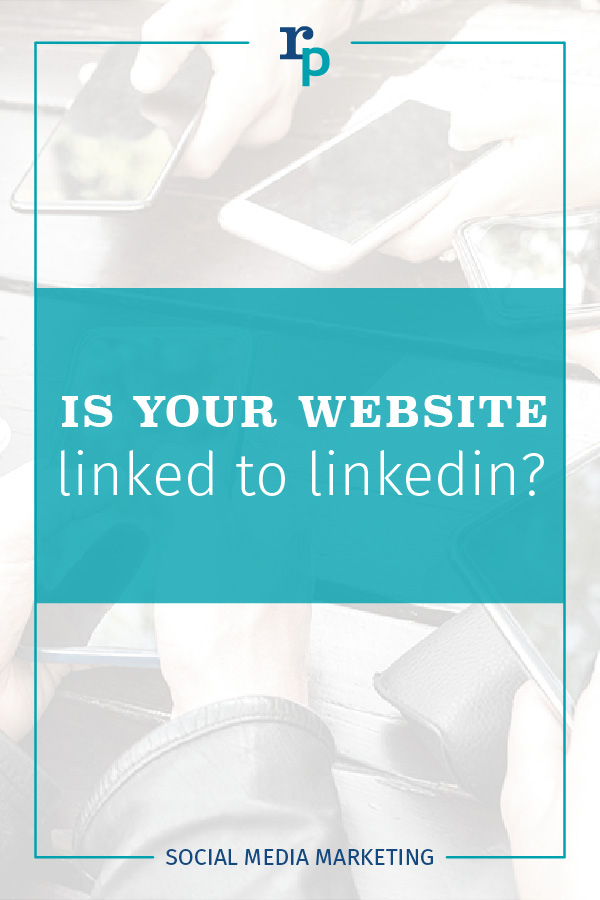Is Your Website Linked to LinkedIn?
LinkedIn’s impact on business networking and development is huge. 500 million users, 3 million that share something every week. 100,000 LinkedIn articles published weekly. But we know your website is important too.
In fact, if you’re committed to inbound marketing, you know the power of blogging. Did you know you can also blog on LinkedIn using their article publishing platform? How do these two marketing tools work together? How do you support both with limited resources?
There are many articles and many options out there to address this issue. Most use the word integrate to loosely describe adding a LinkedIn button, an embedded activity stream, or posting the same article in both places. Today, I want to review the main options for taking advantage of your WordPress/LinkedIn opportunities.
- Social Media Sharing Buttons
- Profile Link/Follow Button vs. Embedded Profile Plugin
- Embedded LinkedIn Activity Feed
- Blogging vs. LinkedIn Articles
We’ll start with basic things everyone should do and move forward to more advanced (and controversial) options.
Social Media Sharing Buttons
Your blog posts should all have social media share buttons. The ubiquitous little discs and chiclets now sprinkled over every webpage are an expected part of the user experience. They not only help your visitors share and spread your content, the presence of these little stickers signals your competence and trustworthiness.
Social media share buttons help your posts look like those found on news and magazine websites. Since you’ve taken the time to configure these features that meet your visitors’ expectations, you look real and fully-formed. They help prove your website is not someone’s weekend project for a fly-by-night operation.
Your social media share buttons can be designed any number of ways, in a horizontal row or maybe a floating vertical bar. The core strategic decision is which networks and share options to include.

Every post should have a share button for Facebook and Twitter. And since we’re talking about business blog posts and LinkedIn, obviously include LinkedIn as well. Probably leave off Pinterest unless your posts include recipes, crafts, or other creative pursuits suited to that network.
In addition to LinkedIn, include share buttons for options popular with professionals and business users. Add click to share by email, click to print, and click to copy URL.
Profile Link/Follow Button vs. Embedded Profile Plugin
Do you want to show your LinkedIn profile on your website? The Embedded Profile plugin has you covered. This element shows your picture and a few important details. It also functions as a link to your LinkedIn page.

The important thing to remember about this tool is that it’s a glorified window sticker announcing the fact that you’re on LinkedIn. Great! Who cares. Everyone savvy enough worth talking to is on LinkedIn already. I do think it’s worthwhile to include a link to your LinkedIn profile, but using LinkedIn’s own plugin won’t get you extra points.
Besides, I think it’s oversized, outdated and plain ugly to look at. Where are you going to put that? If anywhere, choose the bottom of your personal bio page, after the last paragraph. And to fulfill the function of telling the world about your LinkedIn page and inviting them to follow you, include a link in your website footer. If possible, use a mini icon. You may already have other social media networks linked to from icons like this.
Embedded LinkedIn Activity Feed
Maybe showing off your mug with an embedded profile isn’t quite what you’re thinking of when you think about LinkedIn integration. Is there a way to show your LinkedIn posts and activity on your website? Yes, friend, there is a way.
But why? I love the why question. It makes you dig deeper down to your true intentions. Either you’ll find a good reason to make a certain choice or you may scrape the bottom and discover zero good reasons, thus saving you from wasting your time.
Why do you want to display a LinkedIn activity feed on your website? Here are reasons I’ve gathered from answers given by many past clients:
We post good stuff there. I think more people should know about it. We’re really trying to build more followers.
Why do you want more followers? So more people see our links and go to our website.
You have new visitors on your website and you want to show them your LinkedIn feed so they can click on links that take them away from your site?
Don’t do it. The direction of traffic should be from LinkedIn to you. The same for Facebook and Twitter. Those networks are designed to keep visitors inside their walled gardens and away from your website so they can profit from ads.
But if you really want a LinkedIn feed, try the LinkedIn Company Updates plugin.
And now, for the main event.
Blogging vs. LinkedIn Articles
LinkedIn debuted a feature in 2014 called Pulse. It was a new publishing platform, separate from the regular activity feed. Marketers became very excited. Suddenly, there was a new and valuable source of links back to their websites. They envisioned posting the same articles in two places, getting double the value for their time and effort.
However, the key word is “value.” What are you blogging for? Are you building up SEO for your website? Cross-posting on LinkedIn won’t hurt your website’s SEO, but viewers rarely seem to click through from links on LinkedIn articles. Are you blogging to build your personal brand and following? Cross-posting on LinkedIn (or Medium) can expand your audience far beyond your website. Go ahead, maybe wait a week and change the title, then post a copy of your original on LinkedIn. You’ll get more views and more reach.
Treat LinkedIn articles like guest posting. The benefit lays primarily in expanding your audience by reaching out to the built-in readership of LinkedIn’s users. But you won’t see sales of your product or service spike the next morning.
Since 2014, Pulse has been layered into the activity feed and it’s sort of disappeared from the LinkedIn home screen. However, you can still find channels of topic-specific content curated by LinkedIn’s editors. Imagine your article being featured on a channel followed by other experts. And the core ability to publish long form posts on LinkedIn remains. Check it out by logging into LinkedIn and clicking the Write an article button.

Have you considered adding any of these tools and tactics to your marketing mix? Any questions? What action step will you take today?
Listen for more on LinkedIn
looking for more LinkedIn tips?
We’ve got you covered with 30 days worth of tips.

Chatbot Basics 101
Let's talk about chatbots. You know, those things you sometimes message on different applications...
Favorite Social Media
What is your favorite social media platform? Remember the days when there was just Myspace? Oh,...
Call to Action Do’s and Don’ts
There is such a thing as a bad call to action The goal of any page on a website, whether it's the...
5 Ways to Engage Your Audience on Instagram
With over a billion active users worldwide, Instagram will never run out of fresh visual content....
